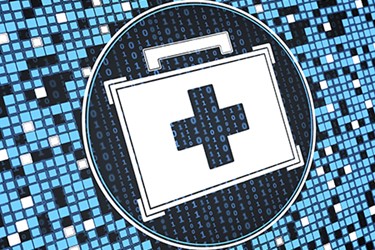A Look At Healthcare IT Trends
By Sanjeev Agrawal, President and Chief Marketing Officer, LeanTaaS

As new technology increasingly is adopted by healthcare organizations, a variety of trends are emerging to enable better care. Here’s my take on what healthcare IT industry constituents can expect this year.
New Wave Of Cyberattacks
The value of stolen patient records in the dark net has gone down from $300 to less than $10, but the determination of hackers to exploit healthcare organizations hasn’t. In 2017, they showed us a preview with WannaCry and Petya. In 2018, they will continue to use off-the-shelf tools and phishing attacks to trick unsuspecting users and cause havoc. Healthcare organizations should expect a new wave of cyberattacks and brace for a continued and difficult battle.
As the saying goes, security is a state of mind, not the end state. Healthcare organizations should go beyond compliance and checklists and take on the enemy with sophisticated defense — identify your most critical data, figure out all possible attack vectors, and use the latest tools and the best security folks you can find to protect your data.
More AI And Machine Learning
The world of AI and machine learning is evolving quite rapidly and becoming more advanced and affordable. We’re seeing an unprecedented increase in machine-generated data from sensors and other equipment. We have more public and private data sets to aggregate and make sense from. We have unprecedented access to cloud and distributed computing. All this will enable more intelligent applications that can look at the big picture and solve hard problems in healthcare — better early interventions, better treatments, better care.
More Conversational Interfaces And Voice-Enabled Applications
The era of mobile applications is coming to an end, and voice is taking off. We’ve already seen many voice assistants providing meaningful home care. That combined with more sensors and AI will give rise to a new wave of intelligent voice assistants that can take healthcare to the next level and significantly improve the overall continuum of care for patients. 2018 will be an exciting year for technology as many pieces of the puzzle come together to make intelligent assistants more practical, affordable and real. They won’t replace doctors or nurses, but they will help monitor and administer care much more effectively at a lower cost.
Increasing Effective Capacity
In 2018, health systems should begin to see the need to re-evaluate the mathematical foundation used to manage their day-to-day operations — and upon which the quality of the patient experience relies. All the macro forces in healthcare (more patients, older patients, higher incidence of chronic illnesses, lower reimbursements, push toward value-based care, and tighter operating and capital budgets) indicate an urgent need to be able to do more with existing assets without upsetting patient flow. A strong mathematical foundation will enable a level of operational excellence to help health systems increase their effective capacity for treating more patients while simultaneously improving the overall flow and reducing wait time.
Continued Chaos
A look back at 2017 says this: 2018 will be another year where payers, providers, and pharmaceutical and life sciences organizations face continued legislative and regulatory upheaval as consumers demand more, better access. Healthcare providers will continue to feel pressure to accelerate their companies’ transformations using advanced data science and mobile technologies.
Those who invest in health IT ahead of the curve, focus on better utilizing the mountains of data they strain to secure and look to connect systems as never before will emerge from an uncertain year better positioned to succeed and prosper.
About The Author
Sanjeev Agrawal is president and chief marketing officer of LeanTaaS, a Silicon Valley-based innovator of predictive analytics solutions to healthcare’s biggest operational challenges. He works closely with dozens of leading healthcare institutions including Stanford Health Care, UCHealth, and NewYork-Presbyterian, Cleveland Clinic, MD Anderson and more. Sanjeev was Google’s first head of product marketing. Since then, he has had leadership roles at three successful startups: CEO of Aloqa, a mobile push platform (acquired by Motorola); VP product and marketing at Tellme Networks (acquired by Microsoft); and as the founding CEO of Collegefeed (acquired by AfterCollege). Sanjeev graduated Phi Beta Kappa with an EECS degree from MIT and along the way spent time at McKinsey & Co. and Cisco Systems. He is an avid squash player and has been named by Becker's Hospital Review as one of the top entrepreneurs innovating in healthcare. For more information on LeanTaaS, please visit www.leantaas.com and follow the company on Twitter @LeanTaaS, Facebook at www.facebook.com/LeanTaaS and LinkedIn at www.linkedin.com/company/leantaas.
